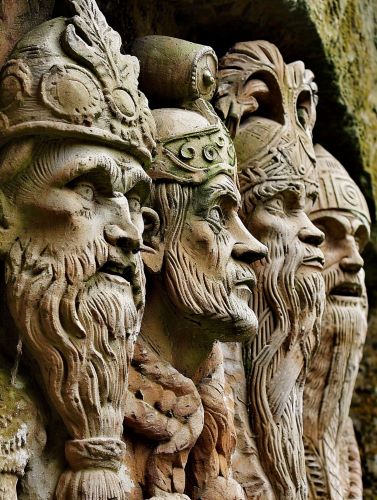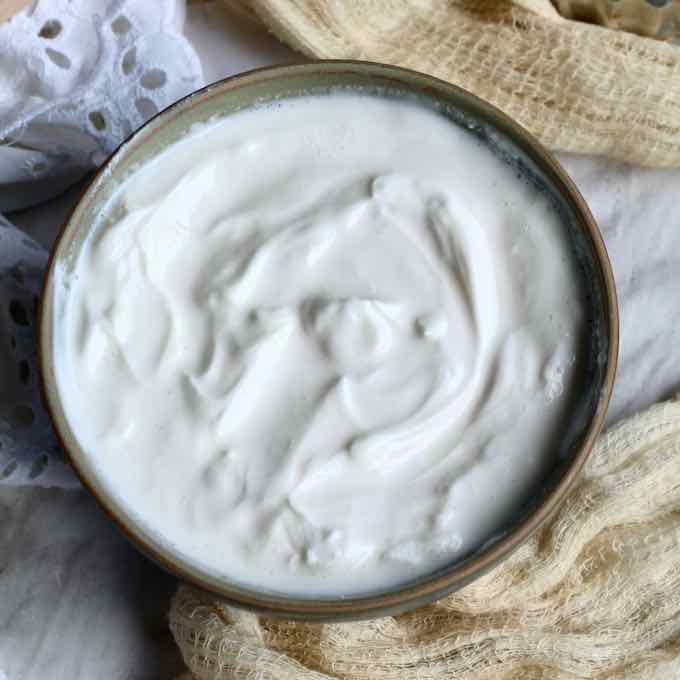
Cuisine
in El-Sod Elohim
For a broader understanding of the cuisines from these ancient cultures, you might want to explore the concept of experimental archaeology, which involves reconstructing cuisines based on archaeological finds, historical texts, and a dash of creative interpretation. There's a wealth of information out there on how ancient Babylonian tablets have been interpreted to provide insights into Mesopotamian cuisine, and how Roman gastronomy has been explored with a focus on dishes like garum, a fish sauce that may have origins in the Phoenician or Carthaginian culture before spreading to Rome.
Click this button for more Cultural info
For the Carthaginian culture, a recipe that stands out is "Punic Porridge," also known as "Puls Punica." It's a dish that has been reconstructed based on historical texts, specifically from the Roman author Cato's "De Agri Cultura." The porridge is a simple yet rich mixture that includes grains like farro (which is akin to the ancient grain alica mentioned by Cato), fresh cheese (ricotta can be a modern substitute), honey, and an egg. The ingredients are mixed and simmered to create a dish that is somewhat similar to a custard or pudding, sweet and hearty in nature
For the Celtic culture, a classic dish that has stood the test of time is Colcannon, which is an Irish dish made from mashed potatoes mixed with kale or cabbage, and flavored with onion, leeks, and cream or butter. It's a hearty, comforting dish that speaks to the rustic and robust cuisine of the Celts. This dish is traditionally associated with Halloween in Ireland and was used for marriage divination. The ingredients are simple, reflecting the diet of the working class in Celtic times.
Another quintessential Celtic dish is the Cornish Pasty, which is a baked pastry filled traditionally with beef, potato, turnip, and onion. It's a versatile dish that could incorporate various meats and vegetables available at the time.
For the Celtic feast, Salmon was also a prominent feature, especially in regions like Manx where salmon and scallops (referred to as Queenies) were abundant. The salmon would typically be baked with a splash of lemon and wine, and served alongside a rich sauce made with cream, butter, and cheese.
In terms of ancient fare, before the introduction of the potato to Ireland, dairy played a significant role in the diet. Buttermilk was particularly favored and could be made by adding an acid like lemon juice or vinegar to milk, allowing it to curdle.
Irish Stew is another key dish, traditionally made with mutton or kid, potatoes, onions, and water. It's a dish that has evolved over time, with some variations including carrots, turnips, and pearl barley.
These dishes reflect the simple yet nourishing diet of the Celts, with a focus on local and available produce. They represent a cuisine that is deeply connected to the land and the seasons.
Moving on to ancient Chinese cuisine, the dishes are as diverse and rich as the history of China itself. One of the earliest and simplest forms of ancient Chinese food is egg fried rice, which dates back to the Sui Dynasty. This dish was considered a luxury at that time and was known as "gold wrapped silver egg fried rice" because the egg coated the rice, giving it a golden hue. The technique and attention to detail in preparing this dish were indicators of a chef's skill, as each grain of rice needed to be separate and fluffy without sticking together. It's believed that Empress Dowager Cixi favored this dish, which was often served during imperial feasts (Auntie Emily's Kitchen).
From the recipe collection of Lin Hong, a poet from the Southern Song dynasty, we learn about diverse and elegant dishes like forced garlic chive pickled with ginger and prickly ash, broiled taro, sweet shepherd's purse, and "violet sesame" which refers to nettle, among others. These dishes highlight the use of wild greens and reflect a culinary tradition that is deeply connected to nature and the changing seasons. They also reveal the poetic and experiential nature of food in ancient Chinese culture, where cooking methods were an integral part of the dining experience (Robban Toleno).
The historical backdrop of Chinese cuisine also shows a divide between the north and south, with rice dominating the south and flour-based products like noodles and dumplings in the north. This culinary map later expanded into what is known as the "Four Schools" of Chinese cuisine: Shandong's, Jiangsu's, Cantonese, and Sichuan, with other regional styles branching off from these. By the Tang Dynasty, Chinese cuisine had become more diverse with the empire's expansion, incorporating exotic ingredients and a focus on health and longevity
Ancient Egyptian cuisine was quite diverse and, like many ancient cultures, heavily reliant on the grains available at the time. Bread was a staple in the Egyptian diet, often made from barley, millet, and later, wheat. These breads were typically unleavened, akin to what we know today as flatbreads. To add flavor, ingredients such as sesame seeds, honey, and herbs might be incorporated into the dough or used as toppings after baking.
Meat was a luxury mostly enjoyed by the affluent, with most common folks eating more of beans and bread. Poultry, including waterfowl and other birds, were the most prevalent forms of meat, while eggs were a rarity, as it was more beneficial for hens to hatch chicks than to use the eggs for food. For preservation, meats were often smoked, salt-cured, or made into jerky.
Sweets were a treat when available and often involved honey, dates, and nuts. A popular sweet treat involved a dough made from flour and butter, with nuts, and a filling made from dried fruits like figs and raisins, sometimes flavored with orange juice and formed into small stuffed pastries.
As for beverages, beer was a fundamental part of the Egyptian diet, consumed daily and even used as currency. Beer was nutritious, containing solids and providing essential proteins, minerals, and vitamins. The process of brewing involved baking a special bread, which was then crumbled, washed with water, and left to ferment.
Vegetables complemented the diet of beer and bread, with scallions and garlic being common, both for eating and medicinal purposes. A variety of fruits, like dates and figs, were also consumed, either fresh or dried.
Ancient Greek cuisine was quite varied and included an array of interesting dishes. For a taste of their culinary traditions, you might enjoy making a garlic and cheese spread, which is a simple mix of garlic, cheese, herbs, vinegar, and olive oil. It's best served with a crusty loaf and resembles a dish that might have been enjoyed as a snack in ancient Greece (British Museum).
Another option is olive relish, which uses a combination of olives, vinegar, olive oil, and various herbs like fennel and coriander. This relish could serve as a flavorful accompaniment to many meals and is reflective of the Mediterranean flavors prevalent in ancient Greek cuisine (British Museum).
For something more substantial, honey-glazed prawns could be an excellent choice. This dish would combine the sweetness of honey with the savoriness of fish sauce and the aromatic qualities of herbs like oregano, served alongside a simple salad and bread (British Museum).
If you're interested in exploring more ancient Greek recipes, you might want to look at lentil soup, a staple that could be enhanced with leeks, cilantro, and a dressing of vinegar and olive oil. Pancakes with honey and sesame seeds, reminiscent of the modern loukoumades, could be a delightful dessert or breakfast option. Additionally, a nut cake made from a mixture of almonds, hazelnuts, and honey, baked and cut into pieces, offers a sweet treat that echoes the flavors of the past (Olive Tomato).
The Hittites, an ancient civilization located in what is now Turkey, had a cuisine that has intrigued many due to the various references found on ancient tablets. These references show that the Hittites enjoyed a variety of dishes, including breads, casseroles, and grilled meats, and had stringent hygiene standards in their kitchens.
Among the breads mentioned, there was a sweet bread known as Ninda.ku, and other breads made from barley or flavored with cheese and figs. The Hittites didn't use yeast in their bread-making and preferred to bake breads with pounded wheat rather than sifted flour. Moreover, the Hittites recorded over 100 types of pastries, showcasing a rich tradition in baking.
The Hittites also enjoyed a selection of cold meats, and their feasts included dishes like Happena, which was a casserole made with meat, olive oil, and honey, and Kariya, consisting of grilled lamb liver and heart. They also had sandwiches made with cooked meat and onion, and a variety of mashed dishes known as Beruwa, which came with chickpeas and cucumbers among other variations.
An interesting fact about their culinary practices is the high importance they placed on cleanliness. Ancient records indicate that if a chef with an unmanaged beard or long hair or an animal entered the kitchen, they faced severe penalties, highlighting how seriously Hittites took sanitary issues even 4,000 years ago.
Researchers and chefs have tried to recreate these ancient Hittite dishes, often using similar techniques and ingredients, such as buckwheat crushed on stones, to get as close to the original flavors as possible.
The Inca cuisine, rich and diverse due to the vast expanse of the Inca Empire, offers a variety of ingredients and dishes that have evolved but still retain their ancient roots. Staples of Inca diet included maize, potatoes, quinoa, and a variety of fruits and meats. One interesting aspect of Inca cuisine was the use of drying and freeze-drying techniques, particularly for meats like jerky, which comes from the Quechua term ch'arki. These methods, along with extensive food storage systems, allowed the Incas to preserve food for long periods, ensuring supplies during times of shortage.
The Incas were known for their sophisticated farming techniques, such as terracing and irrigation, which maximized agricultural production. They cultivated a range of crops, including maize, coca, beans, and sweet potatoes. Llamas and alpacas were central to Andean life, providing wool, meat, leather, and transportation.
Meals often consisted of two main parts of the day and were typically vegetarian, with meat reserved for special occasions. The Incas used stone or clay stoves for cooking, mainly boiling or roasting their food. Chicha, a mildly alcoholic beverage made by fermenting maize or other plants, was a popular drink.
The Indus Valley civilization, also known as the Harappan civilization, had a rich and diverse diet that was mainly plant-based with occasional meat consumption. The staples of their diet included wheat and barley, which they likely made into bread or used to cook as gruel or porridge. They also grew a variety of pulses such as lentils, peas, chickpeas, green gram, and black gram.
In addition to cereals, the Indus people cultivated and consumed a wide array of fruits and vegetables like brassica (a type of cabbage), mustard greens, coriander, dates, jujubes, walnuts, grapes, and figs. Other plants such as mango, okra, caper, sugarcane, garlic, turmeric, ginger, cumin, and cinnamon were available locally and probably used by the Harappans, although direct evidence may be limited. Sesame and linseed oils were used as well, indicating a knowledge of oil extraction.
Meat was sourced mainly from domesticated cattle, but they also kept chickens and some sheep and goats, and hunted wildfowl and wild animals like deer, antelopes, and wild boar. Fish and shellfish were also part of their diet, with evidence suggesting that marine fish like jack and catfish were consumed far inland, indicating a trade system or movement of goods within the civilization.
Cooking was done in kitchens that opened from the courtyard, with hearths or brick-built fireplaces. Pottery vessels of various sizes were used for cooking, and in wealthier households, metal vessels were also employed. The Harappans used flint blades for harvesting crops, and evidence of ploughed fields indicates the use of ploughs early in the 3rd millennium BC.
Exploring ancient Mayan cuisine reveals a rich tapestry of flavors and techniques, many of which continue to influence modern culinary traditions in regions like Guatemala. The Mayans had a diet primarily based on maize, beans, and squash. Maize was not just a staple food but held a spiritual significance, being integral to Mayan myths and daily life. It was used in various forms, from tortillas to tamales and atoles. Beans provided protein and were often simmered into stews, while squash added a sweet balance to meals.
One intriguing aspect of Mayan cuisine is their use of chilies, ranging from mild poblanos to fiery habaneros, which were central to their dishes. They also utilized various herbs and tree-cropped foods like avocado, tomato, guava, and papaya. In terms of cooking techniques, the Mayans were known for stone grinding maize into flour and using methods like pit cooking and the comal (a flat clay griddle) for preparing meals.
In the realm of beverages, drinks like atole (a warm maize-based drink) and pozol (a fermented maize beverage) were not only everyday refreshments but also had ceremonial importance.
Modern Guatemalan dishes, while incorporating global influences, still hold onto these Mayan flavors and methods. Dishes like Pepian (a rich stew) and Tamales are traditional recipes that continue to be popular. Chefs today often add contemporary twists to these classic dishes, blending tradition with innovation.
Exploring ancient Norse cuisine offers a fascinating glimpse into Viking Age food and culture. The diet during this period in Scandinavia was varied and well-rounded, including a mix of meats, grains, vegetables, and dairy products.
The Vikings primarily consumed a lot of meat, including beef, lamb, and pork, as well as game meats like deer. They also had a variety of fish and seafood, given their seafaring nature. Dairy products, particularly cheese and butter, were common in their diet. When it came to grains, barley and rye were staples, used in making bread and porridge.
Vegetables played a significant role in the Viking diet, with common vegetables including cabbages, onions, and root vegetables like turnips. The Vikings also consumed a variety of fruits, nuts, and legumes.
For seasoning, they used herbs such as dill, coriander, and mustard seeds, and they also had a fondness for honey, which was used as a sweetener.
One of the most common beverages was mead, made from fermented honey, alongside beer and ale. Interestingly, their culinary methods were quite sophisticated, including smoking and salting meats for preservation, and using clay ovens for baking.
Some specific dishes that reflect the Viking Age cuisine include:
For the Olmec civilization, direct information about their specific culinary practices is scarce. However, we can glean insights into the ancient Mesoamerican cuisine, which would have influenced or been similar to the Olmec diet, by looking at the broader food culture of the region.
The ancient Mesoamerican diet was predominantly plant-based, with maize, beans, squash, and chili being the four main staples. These ingredients were foundational in the region's agriculture and were used in various culinary forms. The use of amaranth, avocado, cassava, cherimoya, chia, chocolate, guava, nanche, pineapple, sapodilla, sweet potatoes, yucca, and zapote was also prevalent.
Regarding animal foods, the only domesticated animals in ancient Mesoamerica were dogs, turkeys, and the Musovy duck, all used for food. However, meat from large animals was a minor part of the diet. The Aztecs, a later civilization in the same region, consumed insects, including ants, grasshoppers, and worms, which were high in protein and could often be harvested in large numbers. Additionally, blue-green spirulina algae was a significant protein source.
One of the most notable agricultural technologies of the ancient Mesoamerican civilizations was the chinampa system. This involved creating long, rectangular gardens made from reclaimed swampland, which were highly productive and allowed for the cultivation of various crops, including maize, amaranth, squash, and beans.
For the Persian (Achaemenid) cuisine, we have some fascinating insights into their culinary practices, particularly those associated with the royal courts. The Achaemenid Persian diet was both sophisticated and varied, reflecting the empire's wide-reaching influence.
The Achaemenid Persian kings, like Cyrus, were known for their lavish feasts. These meals were not just about the food but also about showcasing their wealth and power. The feasts often included a wide array of ingredients and dishes, prepared with great care and culinary skill.
Some of the key features and ingredients of Achaemenid Persian cuisine included:
A signature Phoenician dish might include a simple yet flavorful fish stew, combining freshly caught seafood with herbs like thyme and oregano, simmered in a broth with onions and garlic. They also relished fruits like figs, pomegranates, and grapes, showcasing their skill in agriculture.
In addition, the Phoenicians were adept traders, which allowed them to incorporate a variety of spices and ingredients from across the Mediterranean into their cuisine. Olives and olive oil were central to their diet, used both for cooking and as dressings. This cuisine reflects the Phoenicians' connection to the sea and their role as ancient merchants and explorers.
A typical Sumerian meal might include a barley porridge, enriched with pulses like beans and lentils, and flavored with onions, leeks, and garlic. They also consumed a variety of vegetables, such as cucumbers, lettuce, and turnips, and fruits like apples and pears when in season.
Meat, mainly from domestic animals such as sheep and goats, was reserved for special occasions. The Sumerians were also known for their dairy products, with cheese and yogurt being a part of their diet.
Their cuisine, while simple, was nourishing and reflected the agricultural capabilities and the natural resources of the fertile crescent region. The Sumerian culinary practices laid the foundation for many aspects of Mesopotamian cuisine that influenced the surrounding regions.
A typical Canaanite meal might feature a barley or wheat bread, accompanied by a spread made from olives and olive oil, seasoned with local herbs. Figs and grapes were often eaten fresh or dried, providing sweetness and nutrients.
Their cuisine also included a variety of legumes like lentils and chickpeas, which were used in stews and salads. Vegetables such as onions, garlic, and leeks were common, adding flavor to their dishes.
The Canaanites were also known for their fermented products, like wine and vinegars, which were used both for consumption and in religious ceremonies. Their diet was a reflection of the ancient Levantine culinary traditions, emphasizing the use of local, seasonal ingredients.
Family Cookbook
Carthaginian
Carthage was in the region of modern-day Tunisia. We might find references to ancient North African foods, which would have used grains, fruits, vegetables, and fish.For the Carthaginian culture, a recipe that stands out is "Punic Porridge," also known as "Puls Punica." It's a dish that has been reconstructed based on historical texts, specifically from the Roman author Cato's "De Agri Cultura." The porridge is a simple yet rich mixture that includes grains like farro (which is akin to the ancient grain alica mentioned by Cato), fresh cheese (ricotta can be a modern substitute), honey, and an egg. The ingredients are mixed and simmered to create a dish that is somewhat similar to a custard or pudding, sweet and hearty in nature
Celtic
The Celts spread across many parts of Europe. Their diet was simple, often based on grains like barley and wheat, meats, and dairy products.For the Celtic culture, a classic dish that has stood the test of time is Colcannon, which is an Irish dish made from mashed potatoes mixed with kale or cabbage, and flavored with onion, leeks, and cream or butter. It's a hearty, comforting dish that speaks to the rustic and robust cuisine of the Celts. This dish is traditionally associated with Halloween in Ireland and was used for marriage divination. The ingredients are simple, reflecting the diet of the working class in Celtic times.
Another quintessential Celtic dish is the Cornish Pasty, which is a baked pastry filled traditionally with beef, potato, turnip, and onion. It's a versatile dish that could incorporate various meats and vegetables available at the time.
For the Celtic feast, Salmon was also a prominent feature, especially in regions like Manx where salmon and scallops (referred to as Queenies) were abundant. The salmon would typically be baked with a splash of lemon and wine, and served alongside a rich sauce made with cream, butter, and cheese.
In terms of ancient fare, before the introduction of the potato to Ireland, dairy played a significant role in the diet. Buttermilk was particularly favored and could be made by adding an acid like lemon juice or vinegar to milk, allowing it to curdle.
Irish Stew is another key dish, traditionally made with mutton or kid, potatoes, onions, and water. It's a dish that has evolved over time, with some variations including carrots, turnips, and pearl barley.
These dishes reflect the simple yet nourishing diet of the Celts, with a focus on local and available produce. They represent a cuisine that is deeply connected to the land and the seasons.
Chinese
Ancient cuisine is well-documented, especially from documents like "The Classic of Poetry" which dates back to the Zhou dynasty.Moving on to ancient Chinese cuisine, the dishes are as diverse and rich as the history of China itself. One of the earliest and simplest forms of ancient Chinese food is egg fried rice, which dates back to the Sui Dynasty. This dish was considered a luxury at that time and was known as "gold wrapped silver egg fried rice" because the egg coated the rice, giving it a golden hue. The technique and attention to detail in preparing this dish were indicators of a chef's skill, as each grain of rice needed to be separate and fluffy without sticking together. It's believed that Empress Dowager Cixi favored this dish, which was often served during imperial feasts (Auntie Emily's Kitchen).
From the recipe collection of Lin Hong, a poet from the Southern Song dynasty, we learn about diverse and elegant dishes like forced garlic chive pickled with ginger and prickly ash, broiled taro, sweet shepherd's purse, and "violet sesame" which refers to nettle, among others. These dishes highlight the use of wild greens and reflect a culinary tradition that is deeply connected to nature and the changing seasons. They also reveal the poetic and experiential nature of food in ancient Chinese culture, where cooking methods were an integral part of the dining experience (Robban Toleno).
The historical backdrop of Chinese cuisine also shows a divide between the north and south, with rice dominating the south and flour-based products like noodles and dumplings in the north. This culinary map later expanded into what is known as the "Four Schools" of Chinese cuisine: Shandong's, Jiangsu's, Cantonese, and Sichuan, with other regional styles branching off from these. By the Tang Dynasty, Chinese cuisine had become more diverse with the empire's expansion, incorporating exotic ingredients and a focus on health and longevity
Egyptian
Ancient fare is known from hieroglyphics and archaeology; they had a diet rich in bread, beer, onions, and garlic, with occasional meat and fish.Ancient Egyptian cuisine was quite diverse and, like many ancient cultures, heavily reliant on the grains available at the time. Bread was a staple in the Egyptian diet, often made from barley, millet, and later, wheat. These breads were typically unleavened, akin to what we know today as flatbreads. To add flavor, ingredients such as sesame seeds, honey, and herbs might be incorporated into the dough or used as toppings after baking.
Meat was a luxury mostly enjoyed by the affluent, with most common folks eating more of beans and bread. Poultry, including waterfowl and other birds, were the most prevalent forms of meat, while eggs were a rarity, as it was more beneficial for hens to hatch chicks than to use the eggs for food. For preservation, meats were often smoked, salt-cured, or made into jerky.
Sweets were a treat when available and often involved honey, dates, and nuts. A popular sweet treat involved a dough made from flour and butter, with nuts, and a filling made from dried fruits like figs and raisins, sometimes flavored with orange juice and formed into small stuffed pastries.
As for beverages, beer was a fundamental part of the Egyptian diet, consumed daily and even used as currency. Beer was nutritious, containing solids and providing essential proteins, minerals, and vitamins. The process of brewing involved baking a special bread, which was then crumbled, washed with water, and left to ferment.
Vegetables complemented the diet of beer and bread, with scallions and garlic being common, both for eating and medicinal purposes. A variety of fruits, like dates and figs, were also consumed, either fresh or dried.
Greek
Ancient recipes are some of the best-preserved, with texts like "Deipnosophistae" by Athenaeus providing insights into their cooking.Ancient Greek cuisine was quite varied and included an array of interesting dishes. For a taste of their culinary traditions, you might enjoy making a garlic and cheese spread, which is a simple mix of garlic, cheese, herbs, vinegar, and olive oil. It's best served with a crusty loaf and resembles a dish that might have been enjoyed as a snack in ancient Greece (British Museum).
Another option is olive relish, which uses a combination of olives, vinegar, olive oil, and various herbs like fennel and coriander. This relish could serve as a flavorful accompaniment to many meals and is reflective of the Mediterranean flavors prevalent in ancient Greek cuisine (British Museum).
For something more substantial, honey-glazed prawns could be an excellent choice. This dish would combine the sweetness of honey with the savoriness of fish sauce and the aromatic qualities of herbs like oregano, served alongside a simple salad and bread (British Museum).
If you're interested in exploring more ancient Greek recipes, you might want to look at lentil soup, a staple that could be enhanced with leeks, cilantro, and a dressing of vinegar and olive oil. Pancakes with honey and sesame seeds, reminiscent of the modern loukoumades, could be a delightful dessert or breakfast option. Additionally, a nut cake made from a mixture of almonds, hazelnuts, and honey, baked and cut into pieces, offers a sweet treat that echoes the flavors of the past (Olive Tomato).
Hittite
The Hittite empire’s cuisine is less known, but they were in modern-day Turkey, and texts mention foods like bread, stews, and beer.The Hittites, an ancient civilization located in what is now Turkey, had a cuisine that has intrigued many due to the various references found on ancient tablets. These references show that the Hittites enjoyed a variety of dishes, including breads, casseroles, and grilled meats, and had stringent hygiene standards in their kitchens.
Among the breads mentioned, there was a sweet bread known as Ninda.ku, and other breads made from barley or flavored with cheese and figs. The Hittites didn't use yeast in their bread-making and preferred to bake breads with pounded wheat rather than sifted flour. Moreover, the Hittites recorded over 100 types of pastries, showcasing a rich tradition in baking.
The Hittites also enjoyed a selection of cold meats, and their feasts included dishes like Happena, which was a casserole made with meat, olive oil, and honey, and Kariya, consisting of grilled lamb liver and heart. They also had sandwiches made with cooked meat and onion, and a variety of mashed dishes known as Beruwa, which came with chickpeas and cucumbers among other variations.
An interesting fact about their culinary practices is the high importance they placed on cleanliness. Ancient records indicate that if a chef with an unmanaged beard or long hair or an animal entered the kitchen, they faced severe penalties, highlighting how seriously Hittites took sanitary issues even 4,000 years ago.
Researchers and chefs have tried to recreate these ancient Hittite dishes, often using similar techniques and ingredients, such as buckwheat crushed on stones, to get as close to the original flavors as possible.
Inca
The Incan diet was rich in maize, potatoes, and proteins like guinea pig and llama, with quinoa being a staple grain.The Inca cuisine, rich and diverse due to the vast expanse of the Inca Empire, offers a variety of ingredients and dishes that have evolved but still retain their ancient roots. Staples of Inca diet included maize, potatoes, quinoa, and a variety of fruits and meats. One interesting aspect of Inca cuisine was the use of drying and freeze-drying techniques, particularly for meats like jerky, which comes from the Quechua term ch'arki. These methods, along with extensive food storage systems, allowed the Incas to preserve food for long periods, ensuring supplies during times of shortage.
The Incas were known for their sophisticated farming techniques, such as terracing and irrigation, which maximized agricultural production. They cultivated a range of crops, including maize, coca, beans, and sweet potatoes. Llamas and alpacas were central to Andean life, providing wool, meat, leather, and transportation.
Meals often consisted of two main parts of the day and were typically vegetarian, with meat reserved for special occasions. The Incas used stone or clay stoves for cooking, mainly boiling or roasting their food. Chicha, a mildly alcoholic beverage made by fermenting maize or other plants, was a popular drink.
Indus Valley
We can only hypothesize based on the crops known to be cultivated at the time, such as wheat, barley, and peas.The Indus Valley civilization, also known as the Harappan civilization, had a rich and diverse diet that was mainly plant-based with occasional meat consumption. The staples of their diet included wheat and barley, which they likely made into bread or used to cook as gruel or porridge. They also grew a variety of pulses such as lentils, peas, chickpeas, green gram, and black gram.
In addition to cereals, the Indus people cultivated and consumed a wide array of fruits and vegetables like brassica (a type of cabbage), mustard greens, coriander, dates, jujubes, walnuts, grapes, and figs. Other plants such as mango, okra, caper, sugarcane, garlic, turmeric, ginger, cumin, and cinnamon were available locally and probably used by the Harappans, although direct evidence may be limited. Sesame and linseed oils were used as well, indicating a knowledge of oil extraction.
Meat was sourced mainly from domesticated cattle, but they also kept chickens and some sheep and goats, and hunted wildfowl and wild animals like deer, antelopes, and wild boar. Fish and shellfish were also part of their diet, with evidence suggesting that marine fish like jack and catfish were consumed far inland, indicating a trade system or movement of goods within the civilization.
Cooking was done in kitchens that opened from the courtyard, with hearths or brick-built fireplaces. Pottery vessels of various sizes were used for cooking, and in wealthier households, metal vessels were also employed. The Harappans used flint blades for harvesting crops, and evidence of ploughed fields indicates the use of ploughs early in the 3rd millennium BC.
Maya
The Mayan are known for their use of maize, beans, squash, and chocolate.Exploring ancient Mayan cuisine reveals a rich tapestry of flavors and techniques, many of which continue to influence modern culinary traditions in regions like Guatemala. The Mayans had a diet primarily based on maize, beans, and squash. Maize was not just a staple food but held a spiritual significance, being integral to Mayan myths and daily life. It was used in various forms, from tortillas to tamales and atoles. Beans provided protein and were often simmered into stews, while squash added a sweet balance to meals.
One intriguing aspect of Mayan cuisine is their use of chilies, ranging from mild poblanos to fiery habaneros, which were central to their dishes. They also utilized various herbs and tree-cropped foods like avocado, tomato, guava, and papaya. In terms of cooking techniques, the Mayans were known for stone grinding maize into flour and using methods like pit cooking and the comal (a flat clay griddle) for preparing meals.
In the realm of beverages, drinks like atole (a warm maize-based drink) and pozol (a fermented maize beverage) were not only everyday refreshments but also had ceremonial importance.
Modern Guatemalan dishes, while incorporating global influences, still hold onto these Mayan flavors and methods. Dishes like Pepian (a rich stew) and Tamales are traditional recipes that continue to be popular. Chefs today often add contemporary twists to these classic dishes, blending tradition with innovation.
Norse
Viking age meals likely included a lot of fish, meat, and dairy, with barley as the main grain.Exploring ancient Norse cuisine offers a fascinating glimpse into Viking Age food and culture. The diet during this period in Scandinavia was varied and well-rounded, including a mix of meats, grains, vegetables, and dairy products.
The Vikings primarily consumed a lot of meat, including beef, lamb, and pork, as well as game meats like deer. They also had a variety of fish and seafood, given their seafaring nature. Dairy products, particularly cheese and butter, were common in their diet. When it came to grains, barley and rye were staples, used in making bread and porridge.
Vegetables played a significant role in the Viking diet, with common vegetables including cabbages, onions, and root vegetables like turnips. The Vikings also consumed a variety of fruits, nuts, and legumes.
For seasoning, they used herbs such as dill, coriander, and mustard seeds, and they also had a fondness for honey, which was used as a sweetener.
One of the most common beverages was mead, made from fermented honey, alongside beer and ale. Interestingly, their culinary methods were quite sophisticated, including smoking and salting meats for preservation, and using clay ovens for baking.
Some specific dishes that reflect the Viking Age cuisine include:
- • Clay-baked roast
- • Pan-baked bread with herbs
- • Onion soup with sage
- • Crispy bread croutons
Olmec
As a precursor to later Mesoamerican civilizations, the Olmec diet would have included maize, beans, squash, and perhaps chocolate.For the Olmec civilization, direct information about their specific culinary practices is scarce. However, we can glean insights into the ancient Mesoamerican cuisine, which would have influenced or been similar to the Olmec diet, by looking at the broader food culture of the region.
The ancient Mesoamerican diet was predominantly plant-based, with maize, beans, squash, and chili being the four main staples. These ingredients were foundational in the region's agriculture and were used in various culinary forms. The use of amaranth, avocado, cassava, cherimoya, chia, chocolate, guava, nanche, pineapple, sapodilla, sweet potatoes, yucca, and zapote was also prevalent.
Regarding animal foods, the only domesticated animals in ancient Mesoamerica were dogs, turkeys, and the Musovy duck, all used for food. However, meat from large animals was a minor part of the diet. The Aztecs, a later civilization in the same region, consumed insects, including ants, grasshoppers, and worms, which were high in protein and could often be harvested in large numbers. Additionally, blue-green spirulina algae was a significant protein source.
One of the most notable agricultural technologies of the ancient Mesoamerican civilizations was the chinampa system. This involved creating long, rectangular gardens made from reclaimed swampland, which were highly productive and allowed for the cultivation of various crops, including maize, amaranth, squash, and beans.
Persian - Achaemenid
Persian cuisine from this era may have included bread, stews, and meats, with a rich variety of spices.For the Persian (Achaemenid) cuisine, we have some fascinating insights into their culinary practices, particularly those associated with the royal courts. The Achaemenid Persian diet was both sophisticated and varied, reflecting the empire's wide-reaching influence.
The Achaemenid Persian kings, like Cyrus, were known for their lavish feasts. These meals were not just about the food but also about showcasing their wealth and power. The feasts often included a wide array of ingredients and dishes, prepared with great care and culinary skill.
Some of the key features and ingredients of Achaemenid Persian cuisine included:
- Bread and Grains: Wheat and barley were staple grains, used in various forms of bread and other dishes.
- Meats: A variety of meats like sheep, goats, cattle, and poultry were consumed. Royal feasts would include a large quantity of meat
- Fruits and Nuts: Fruits such as dates, pomegranates, figs, apples, and raisins were common, along with nuts like almonds.
- Spices and Flavors: Classic Persian ingredients included saffron, cumin, and dill. These ingredients are still central to Iranian cuisine today.
- Elaborate Dining: The dining experiences were highly sophisticated, with special cooks, armies of servants, and elaborate dining etiquette.
- Drinks: Wine was a significant part of the royal feasts, with large quantities consumed at these events.
Phoenician
The Phoenicians, located along the Mediterranean coast, had a diet deeply influenced by the sea and fertile lands. Their meals frequently included a variety of fish and seafood, testament to their prowess in maritime activities. Grains, particularly barley and wheat, were staples in their diet, often made into bread or used in stews.A signature Phoenician dish might include a simple yet flavorful fish stew, combining freshly caught seafood with herbs like thyme and oregano, simmered in a broth with onions and garlic. They also relished fruits like figs, pomegranates, and grapes, showcasing their skill in agriculture.
In addition, the Phoenicians were adept traders, which allowed them to incorporate a variety of spices and ingredients from across the Mediterranean into their cuisine. Olives and olive oil were central to their diet, used both for cooking and as dressings. This cuisine reflects the Phoenicians' connection to the sea and their role as ancient merchants and explorers.
Sumerian
In ancient Mesopotamia, the Sumerians’ diet was primarily based on agriculture, with barley and emmer wheat being the most important crops. These grains were used to make bread and beer, the latter being a staple beverage in Sumerian society.A typical Sumerian meal might include a barley porridge, enriched with pulses like beans and lentils, and flavored with onions, leeks, and garlic. They also consumed a variety of vegetables, such as cucumbers, lettuce, and turnips, and fruits like apples and pears when in season.
Meat, mainly from domestic animals such as sheep and goats, was reserved for special occasions. The Sumerians were also known for their dairy products, with cheese and yogurt being a part of their diet.
Their cuisine, while simple, was nourishing and reflected the agricultural capabilities and the natural resources of the fertile crescent region. The Sumerian culinary practices laid the foundation for many aspects of Mesopotamian cuisine that influenced the surrounding regions.
Canaanite
The Canaanites, inhabiting the ancient Levant, had a diet that was rich in the bounties of their land and climate. Staples included olives, figs, grapes, and a variety of grains such as barley and wheat. These were the backbone of their diet, used to make bread, stews, and wine.A typical Canaanite meal might feature a barley or wheat bread, accompanied by a spread made from olives and olive oil, seasoned with local herbs. Figs and grapes were often eaten fresh or dried, providing sweetness and nutrients.
Their cuisine also included a variety of legumes like lentils and chickpeas, which were used in stews and salads. Vegetables such as onions, garlic, and leeks were common, adding flavor to their dishes.
The Canaanites were also known for their fermented products, like wine and vinegars, which were used both for consumption and in religious ceremonies. Their diet was a reflection of the ancient Levantine culinary traditions, emphasizing the use of local, seasonal ingredients.
Except where otherwise noted, content on this site is licensed under a Creative Commons Attribution 4.0 International license . Icons by Font Awesome and RPG-Awesome. Platform and base code provided by WorldAnvil. All other text, images and code, unless stated otherwise, copyright ©2023 - 2024 by Morgan Berry.
This is a work of fiction. Names, characters, places, and incidents either are the product of the author's imagination or are used fictitiously. All characters appearing in this work are fictitious, or used fictitiously. Any resemblance to real persons, living or dead, is purely coincidental.














































































































